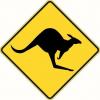I’ve read the instructions. And searched. But don’t know that the answers Ive found are the best.
Is anyone sharpening a Veritas #4 to something other than the suggested 30°/35° angles?
Veritas recommends a 30° primary bevel w/ a 35° secondary bevel. And I’ve done that. But I’d swear no matter how carefully I work w/ this thing, I’m still getting better shavings off my battered old Stanley #4.
I’m considering putting the time into just making the Veritas match the Stanley’s 25°. But since that’ll take some time at the diamond stones, I’d like to know what’s best before I stand there for too long.
Thanks.
-Peter




 Reply With Quote
Reply With Quote






